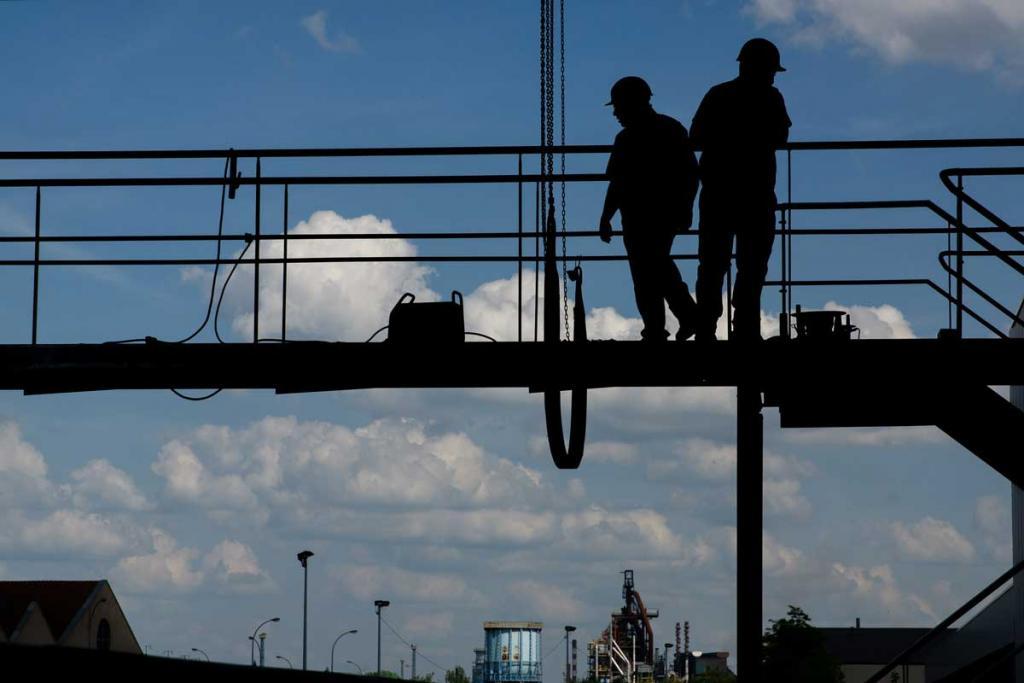Working at Height – Guidance for the employer
Latest statistics from the HSE reveal that, although falls from height are reducing, they are still one of the most common causes of injuries to employees and account for 29% of fatalities in the workplace. Employers are taking their responsibilities very seriously, not least because of the risks to a business, but also the number of lost working days every year as a result of injuries from falls from height.
But there are still too many deaths and injuries from falling so, this week I thought that I would look at the topic of working at height and guide employers as to their duties

Working at Height – Guidance for the employer
Working at height is defined as:
‘work in any place, including a place at or below ground level, or obtaining access to or egress from such a place, while at work, except by a staircase where, if suitable measures were not taken, a person could fall a distance likely to cause personal injury’.
Some facts
- Over three million people in the UK work at height as part of their job
- over 2,670 employees suffered a specified (major) injury, as a result of a fall from height in 2016/17, this resulted in 25 fatalities
- ladders are probably the most used and misused pieces of access equipment
- the vast majority of ladder accidents occur because the ladder is not secured at the top
- work at any height can cause injury; a fall from a height of just one or two steps can cause serious injury
- unsuitable access equipment (such as chairs and tables) can cause serious accidents even in low risk premises such as offices and schools
- it is particularly important to ensure that contractors working on an organisation’s premises (for example for roof maintenance or window cleaning) are properly controlled and do not work in a dangerous way.
Hierarchy of risk control
- Avoid working at height wherever possible by altering the task or the way it can be carried out
- if this is not reasonably practicable, the next step is to use equipment or other control measures to prevent falls
- always consider collective fall prevention measures, such as edge protection, over personal protection, such as harnesses
- if the potential for a fall remains, reduce the likelihood of injury by minimising the distance to fall or its consequences and always consider passive protection, such as safety netting, over active measures, such as having to clip a safety harness on to a structure
- in lower risk premises, take account of how storage areas and high shelving or wall displays are accessed.
Guidelines for Employers
“Plan, organise and supervise all work at height”
Recommendations for employers
Legislation and guidance
- The Work at Height Regulations 2005 (as amended) apply to all work at height when there is a risk of a fall liable to cause personal injury. Duties are placed on employers, the self – employed and any person who controls the work of others (eg facilities managers or building owners who employ contractors to work at height).
- Where the means of making the work at height safe involves fixing points, such as eye bolts, running wires, fixed rail etc, there are legal requirements under the Lifting Operations and Lifting Equipment Regulations 1998 (LOLER) or the Provision and Use of Work Equipment Regulations 1998 (PUWER), for them to be subject to be suitably inspected. In the case where people are suspended or lifted there are specific requirements for thorough examinations at no more than six monthly intervals with inspection records being retained.
Help available from The Wilkins Safety Group Ltd
Here at the Wilkins Safety Group we can help clients with:
- Ladders – inspection and maintenance guidance
- WSG Guide on Working at height checklist – Work at height Competence checklist Work at height contractor Risk Assessment
If you would like any further help or support, please please contact us by phone 01458 253682, email or via our Facebook page or by Twitter.
We have courses in some foreign languages
Do you employ foreign workers who perhaps struggle to fully understand courses in English? Well we are trying to help by having some courses written in other languages.
At the moment the following foreign language courses are available:
- Latvian Health & Safety Induction
- Polish Health & Safety
- Polish Food Hygiene
- Romanian Health & Safety Induction
What is the cost of these courses?
Companies will be able to buy credits. Each of these credits will allow 1 allocated person access to 1 course. The cost of these credits will reduce based on the number of credits purchased. See pricing chart below:
| No of credits | 1-5 | 6-10 | 11-20 | 21-30 | 31-40 | 41-50 | 51-75 | 76-100 | 101-150 | 151-200 | 201-250 |
|---|---|---|---|---|---|---|---|---|---|---|---|
| Cost of credit | £19.99 | £17.99 | £16.99 | £15.99 | £14.99 | £13.99 | £12.99 | £11.99 | £10.99 | £9.99 | £7.99 |
Remember – There is no limit on the time it takes to use the credits
